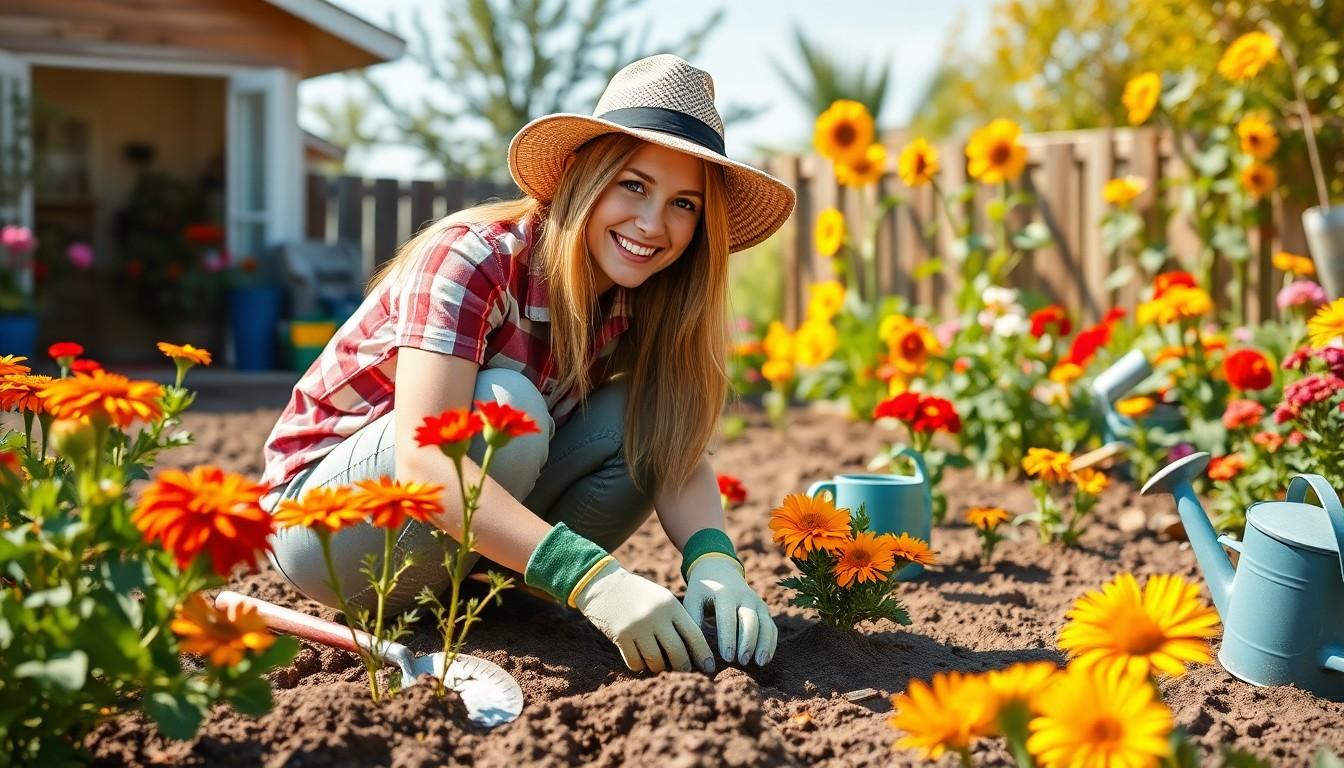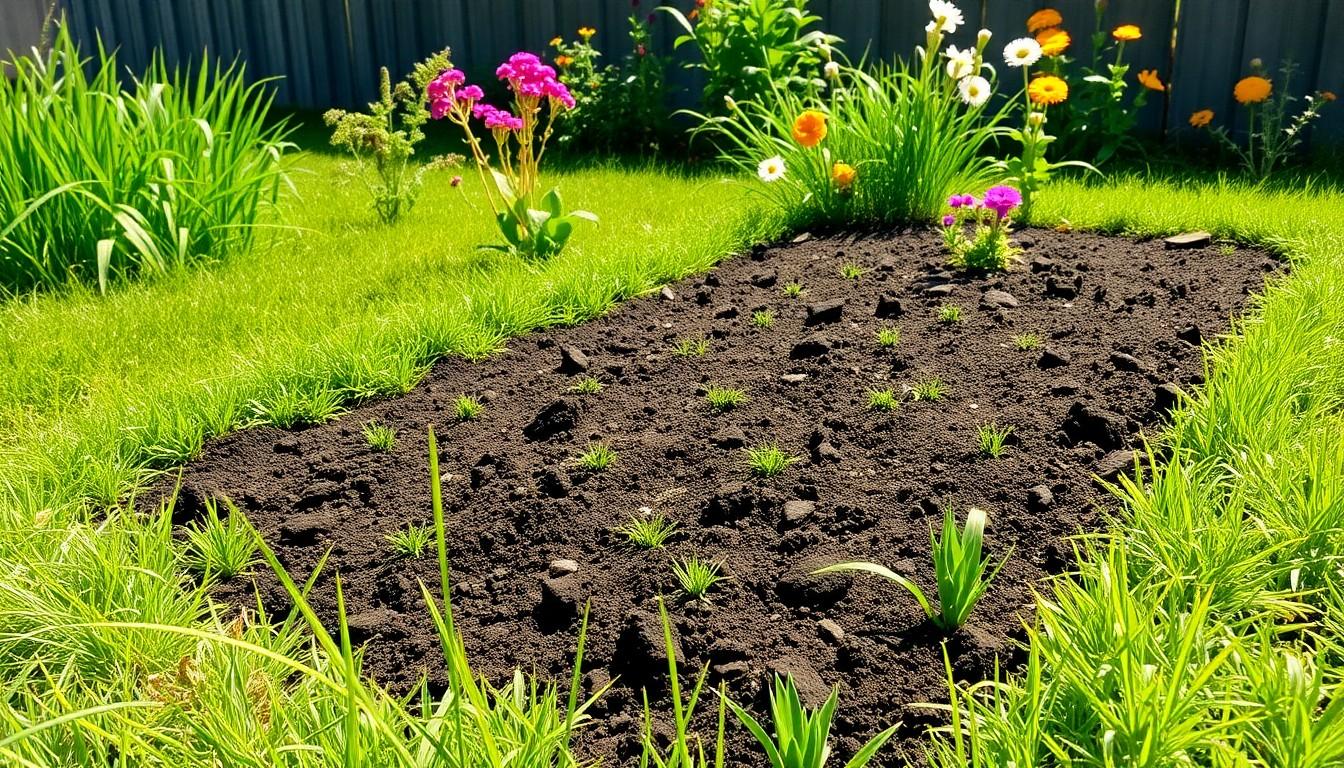The Best Fluffy Pancakes recipe you will fall in love with. Full of tips and tricks to help you make the best pancakes.

First Time Gardening Tips: Easy Secrets for a Thriving Garden That Anyone Can Master
Gardening can seem like a daunting task for first-timers, but it doesn’t have to be! With a little guidance and a sprinkle of humor, anyone can turn their thumb green. Imagine stepping into your backyard and feeling like a botanical wizard, conjuring up beautiful blooms and fresh veggies with just a few simple tricks.
First Time Gardening Tips
Having the right tools makes gardening easier and more enjoyable for beginners. A well-equipped gardener can cultivate their green space efficiently.
Basic Gardening Tools
Shovels and trowels are essential for digging and planting. Pruners help maintain plant health by trimming dead growth. Gloves protect hands from thorns and soil. Watering cans allow for controlled watering, and hoses can offer convenience for larger areas. Garden rakes assist with soil preparation, ensuring an even bed for planting. Overall, these tools create a solid foundation for successful gardening.
Optional Tools To Consider
While not mandatory, some tools enhance the gardening experience significantly. A wheelbarrow simplifies transport of soil, plants, and debris. Soil testers provide insight into pH levels and nutrient content. Plant stands can elevate potted plants, improving visibility and aesthetics. Mulching tools like forks or shredders contribute to better weed management. Finally, a garden journal helps track progress and plan future planting, fostering continuous growth and improvement.
Choosing The Right Location

Selecting the right location for a garden is crucial for success. The spot should offer adequate sunlight, access to water, and good soil conditions.
Sunlight Requirements
Most plants thrive in locations receiving full sun, which means six or more hours of direct sunlight daily. Consider observing the garden area throughout the day to identify sun patterns. Vegetables and flowers may struggle in shaded areas, so prioritize spots that maximize light exposure. Keep in mind that some plants, like lettuce and spinach, tolerate partial shade well. Evaluate each plant’s specific light needs before planting to ensure optimal growth.
Soil Quality Assessment
Healthy soil supports robust plant growth. Start by checking soil texture, drainage, and nutrient content. Sandy soil drains quickly but may lack nutrients, while clay soil retains moisture yet compacts easily. Conduct a simple soil test to assess pH levels and nutrient balance. If soil appears deficient, consider enriching it with organic matter like compost. Making amendments can significantly enhance soil quality, leading to a thriving garden.
Selecting Plants For Beginners
Choosing the right plants enhances the gardening experience for beginners. Selecting options that thrive in various conditions makes for a successful start.
Easy-to-Grow Vegetables
Beginner gardeners can thrive with easy-to-grow vegetables. Radishes, lettuce, and green beans flourish in a variety of soils. Tomatoes and carrots also adapt well, offering high yields with minimal care. Many of these options tolerate variable weather, making them forgiving choices for novices. Starting seeds indoors or directly sowing in prepared beds works effectively for most of these vegetables. Speedy growth in particular varieties, like radishes, provides quick satisfaction and encouragement.
Low-Maintenance Flowers
Low-maintenance flowers provide delightful color without overwhelming effort. Marigolds, zinnias, and sunflowers add vibrant hues and attract pollinators. These flowers generally require minimal watering and are resilient against pests. Perennials such as coneflowers and black-eyed Susans ensure returning blooms each year, creating long-lasting beauty. Soil preparation remains essential, but these options thrive in various conditions. Starting with a mix of annuals and perennials can create a diverse garden that’s easy to manage and visually appealing.
Soil Preparation And Planting Techniques
Preparing soil and planting correctly lays the foundation for a successful garden. Each step matters for optimal plant health.
Testing Your Soil
Conduct a soil test to determine pH levels and nutrient content. Samples taken from multiple spots within the garden provide a comprehensive overview. Local extension services often offer testing kits or conduct tests at low costs. Testing helps identify deficiencies in nitrogen, phosphorus, and potassium. Results guide amendments that improve soil structure and fertility. Incorporate organic matter such as well-rotted manure or compost to boost nutrient levels. Improved soil encourages strong root development and enhances water retention.
Effective Planting Methods
Select appropriate planting methods based on plant type and soil conditions. Dig holes approximately twice the size of the plant’s root ball to encourage healthy growth. Space plants based on their mature size to prevent overcrowding, which can lead to disease. Water thoroughly after planting to settle soil and eliminate air pockets. Consider mulching around plants, as mulch retains moisture and suppresses weeds. Transplant seedlings carefully, ensuring minimal damage to roots. Adopt succession planting to make efficient use of available space and extend harvest periods.
Watering And Maintenance Tips
Watering and maintenance play crucial roles in gardening success. Understanding plant needs leads to healthier growth and vibrant blooms.
Understanding Watering Needs
Watering schedules depend on the specific requirements of each plant. Most vegetables and flowers prefer consistent moisture without soggy roots. New gardeners should check soil moisture regularly by feeling the soil a few inches deep. If it feels dry, watering is necessary. Early morning is the best time for watering, allowing moisture to reach roots before evaporation occurs. Drip irrigation systems or soaker hoses can provide efficient watering solutions, delivering moisture directly to the roots. It’s important to adjust watering frequency based on weather conditions, ensuring plants receive adequate hydration during hot spells.
Mulching And Weeding Strategies
Mulching effectively retains soil moisture and suppresses weeds. A layer of organic mulch, such as straw or wood chips, helps maintain consistent soil temperature. Gardeners often apply a 2 to 3-inch layer around plants for optimal coverage. Regular weeding prevents competition for nutrients and water. Pulling weeds by hand or using a hoe removes them from the root, minimizing their chances of regrowth. Weeding periodically, especially after rain, aids in keeping the garden tidy and healthy. Establishing a routine for mulching and weeding simplifies maintenance and enhances the overall garden appearance.
Common Challenges And How To Overcome Them
Gardening presents various challenges, but understanding them strengthens skills and enhances success. Here’s how to address common issues.
Pest Control Basics
Managing pests requires vigilance. Inspect plants regularly, checking for signs of infestations such as holes in leaves or unusual discoloration. Natural predators like ladybugs and lacewings can help control pest populations, so incorporating them into the garden can aid in pest management. Another effective method is introducing neem oil or insecticidal soap as eco-friendly treatments. Focus on maintaining healthy plants, as stress can attract pests. Rotating crops annually also reduces pest buildup in the soil.
Dealing With Weather Conditions
Weather fluctuations impact gardening success significantly. For extreme heat, provide shade using row covers or shade cloth to protect plants. During heavy rain, ensure proper drainage to prevent root rot. Cold snaps require covering tender plants with frost blankets or moving potted plants indoors. Local weather forecasts help in preparing for sudden changes, allowing gardeners to adapt accordingly. Building a sheltered area for plants encourages resilience against harsh conditions. Proper planning helps maintain a thriving garden despite unpredictable weather.
Understanding Soil Quality And Proper Watering Techniques
Gardening can be a rewarding journey for beginners ready to embrace the outdoors and nurture their green thumbs. By starting with the right tools and selecting easy-to-grow plants, new gardeners can create a thriving garden without feeling overwhelmed.
Understanding soil quality and proper watering techniques is crucial for plant health and productivity. Regular maintenance through mulching and weeding helps keep gardens looking their best while minimizing challenges.
With patience and a little experimentation, anyone can transform their space into a flourishing oasis. The joy of watching plants grow and flourish is a testament to the effort put into gardening.
